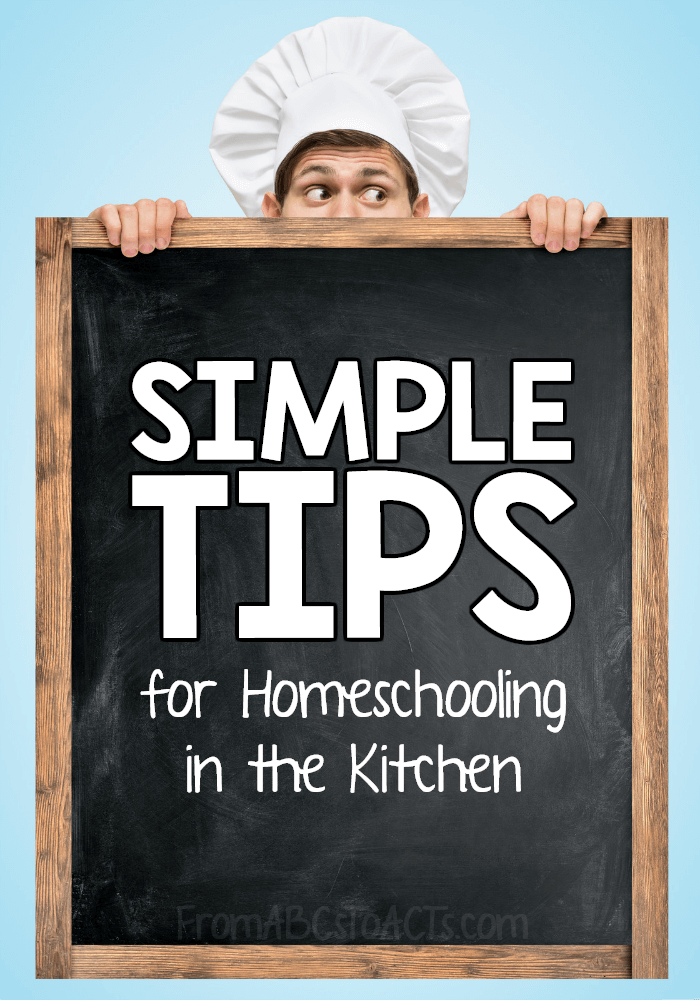This post may contain affiliate links. For more information, please see my full disclosure policy.
The kitchen truly is the heart of the home and with a little thought and planning, it can become the heart of your homeschool as well. While learning can, and does, happen anywhere, the kitchen offers a ton of unique educational opportunities for nearly every subject, making it the perfect unofficial homeschool room.

Homeschooling in the Kitchen
You will, of course, have to tweak these ideas and change things up based on the ages of your children.
For example, if your kids are small, start by having them help you in the kitchen with things that you’re already doing. If possible, set up a small table or put them at the kitchen table with a chair so that they have space to work that is at their level.
On the other hand, if your children are older, they can be given a bit more responsibility and room to learn on their own.
Kitchen Math
Now, when people think about homeschooling in the kitchen, the first thing that comes to mind is math. The kitchen is a fantastic place to study everything from fractions when you cut a homemade pizza to measurements and conversions when you bake a batch of cookies.
Start small if your children are young and have them help you make a simple snack. Not only will they be engaged and entertained while you’re trying to get their snack made, but they’ll also be getting some amazing hands-on experience as well.
If your children are older, try instituting a cooking day once a week. Let them plan the menu and figure out the ingredients that they need. Assign them a budget and let them shop for themselves. Not only will they be learning to cook, a skill they’ll need for life on their own, but they’ll also be gaining valuable life experience on budgeting, grocery shopping, and more!
Kitchen Science
The kitchen is also a great place to explore science. From the mold that takes over the leftovers that were forgotten in the back of the fridge for too long to the chemical reactions that make a cake light and fluffy, the possibilities are endless.
Is the drain running a bit slow? Try grabbing some baking soda and vinegar to clean it out and have your children make a prediction on what they think will happen when the two are mixed or, if they’re a bit older, show them the process of mixing ingredients to make suspensions and solutions while making some jam or jelly.
Kitchen History
History is an amazing subject to teach in the kitchen.
The way that food is cooked and the types of foods that we eat have changed so much throughout the course of history.
Many of the Dear America books and other works of historical fiction often have a recipe included from the book’s time period. Make a few of these with your children to help them foster a connection to the time in history that you are studying.
Kitchen Geography
Studying geography from your kitchen opens up some incredible learning opportunities.
Not only can you take the time to learn about the different countries of the world, but you can also introduce your children to the many diverse cultures found in these countries through their food.
As you study a country and its people, pick a recipe or two from each new place and give them a try. You may try new ingredients and dishes that you’ve never heard of before and you might even learn a new cooking technique!
Your whole family will have an introduction to a new variety of foods and will be spending time together making some amazing memories that you won’t soon forget. Who knows? One of those new dishes might turn out to be a new family favorite!